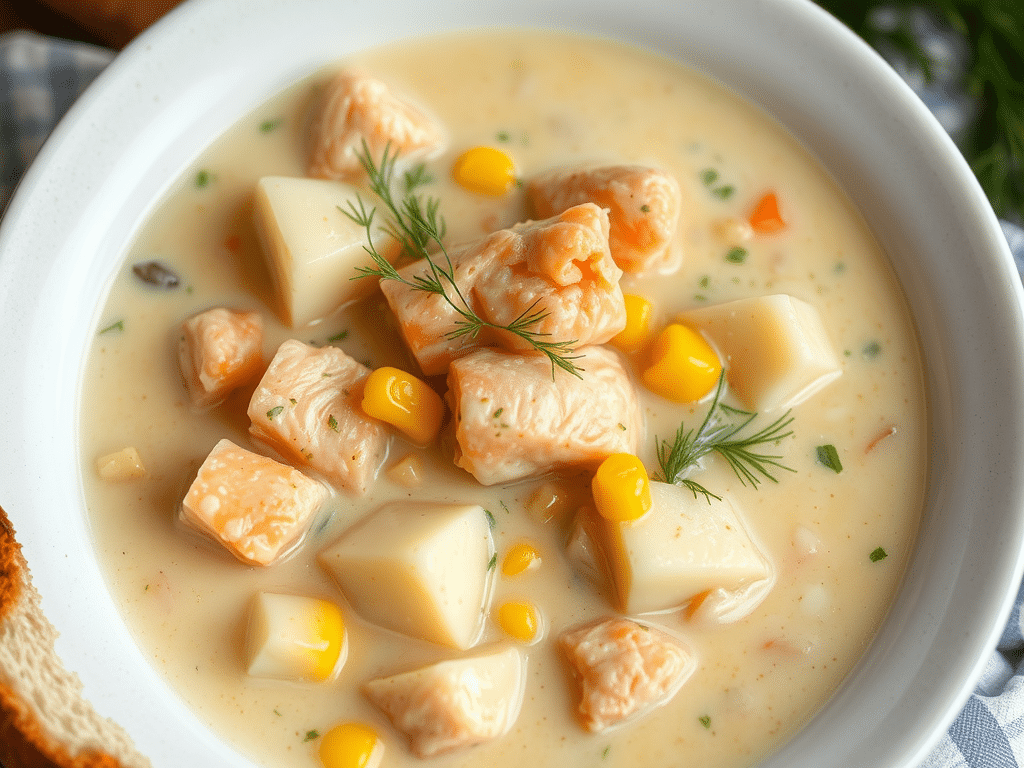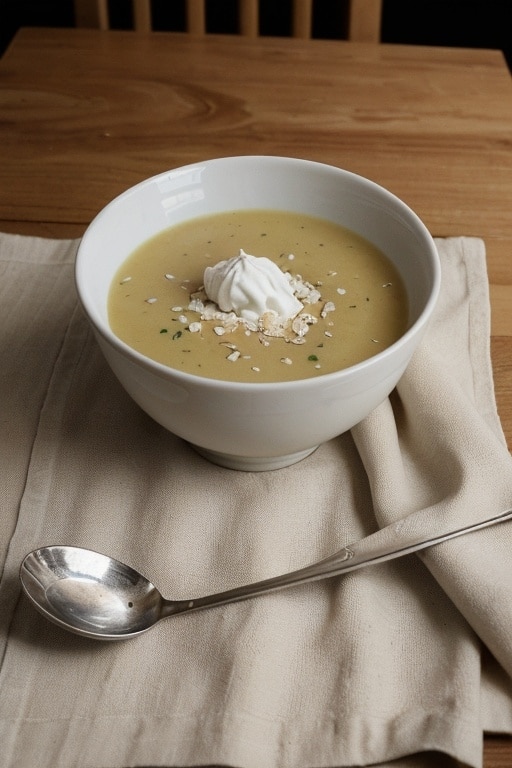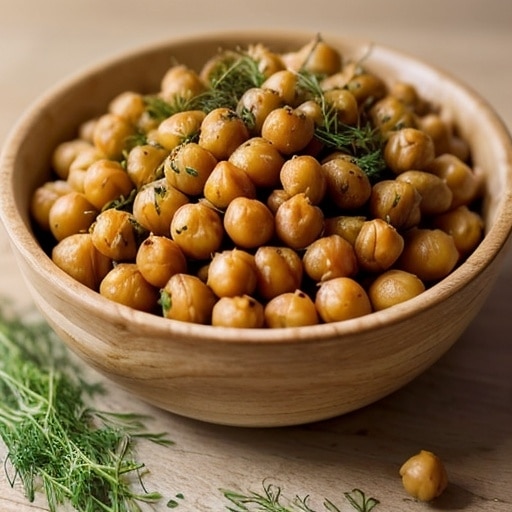When the chill of winter sets in, there’s nothing quite like a warm bowl of chowder to lift your spirits. I still remember the first time I tried Salmon Chowder. I was visiting a quaint coastal town, and the moment the first spoonful hit my lips, I knew I had stumbled upon something special. The rich, creamy texture combined with the fresh taste of salmon was simply unforgettable.
Salmon Chowder stands out because it marries the ocean’s bounty with hearty ingredients. It’s not just a soup; it’s a comforting hug in a bowl. The combination of vegetables, creamy broth, and tender salmon creates a balance that is both satisfying and nourishing. Plus, it’s a great way to showcase fresh seafood, making it perfect for gatherings or cozy family dinners.
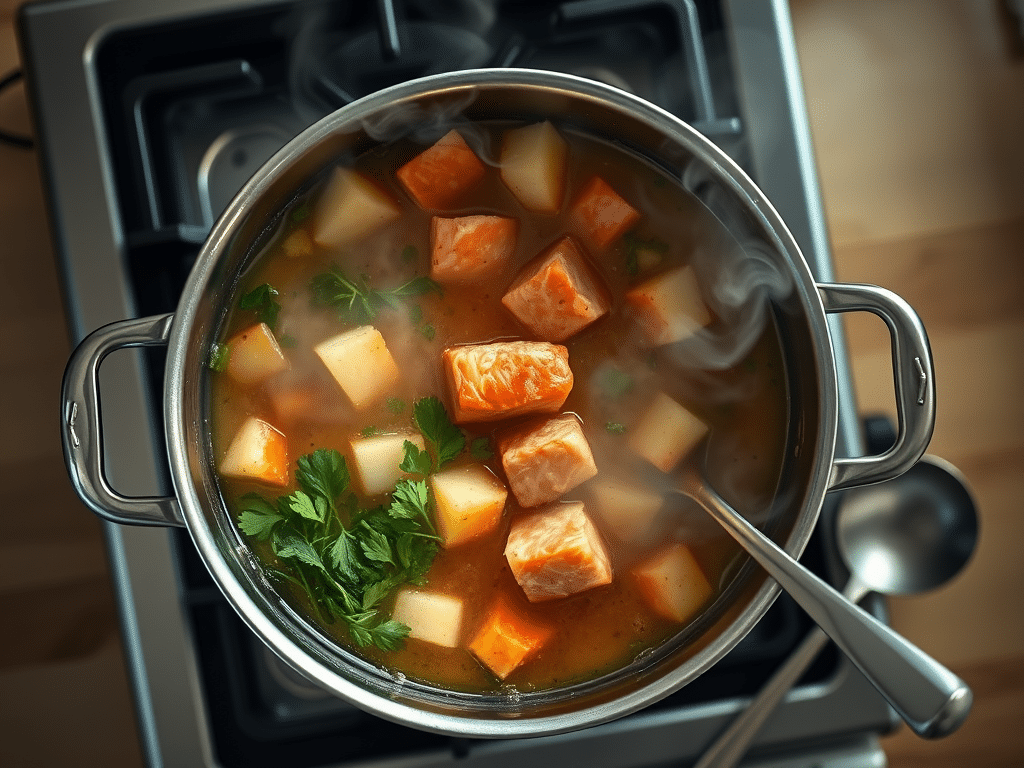
Ingredients & Substitutions
Here’s what you’ll need to create this delightful Salmon Chowder:
- Salmon fillets: 1 pound (skinless, boneless, cut into chunks)
- Olive oil: 2 tbsp (for sautéing)
- Butter: 2 tbsp (for richness)
- Onion: 1 medium (diced)
- Celery: 2 stalks (diced)
- Carrots: 2 medium (diced)
- Garlic: 3 cloves (minced)
- Potatoes: 2 medium (diced, Yukon Gold or Russet)
- Chicken broth: 4 cups (or fish broth for more flavor)
- Heavy cream: 1 cup (for creaminess)
- Corn: 1 cup (fresh or frozen)
- Dill: 2 tbsp (fresh, chopped, or 1 tbsp dried)
- Salt and pepper: to taste
- Lemon juice: from 1 lemon (for brightness)
Substitutions
If you need to tweak this recipe, there are plenty of substitutions. For a lighter version, you can use half-and-half instead of heavy cream. If you’re dairy-free, coconut milk can create a unique flavor profile while maintaining creaminess. For a vegetarian option, skip the salmon and use extra veggies or tofu.
Ingredient Selection
Choosing quality ingredients is key. Fresh salmon is ideal, of course, but if you can’t find it, frozen salmon will work too. Just be sure to thaw it properly before cooking. When it comes to broth, homemade is always best, but low-sodium store-bought can save time. Fresh herbs, particularly dill, elevate the dish; dried herbs can work, but fresh always brings more vibrant flavor.
Step-by-Step Instructions
Let’s dive into the cooking process. Making Salmon Chowder is straightforward and rewarding.
- Sauté the Base: In a large pot, heat olive oil and butter over medium heat. Add diced onion, celery, and carrots. Cook until softened, about 5-7 minutes. This builds a flavor base that’s essential for your chowder.
- Add Garlic: Stir in the minced garlic and cook for an additional minute. Garlic adds depth, but be careful not to burn it, as burnt garlic can overpower the dish.
- Incorporate Potatoes and Broth: Add the diced potatoes to the pot, then pour in the chicken or fish broth. Bring it to a simmer. This step is important; it allows the potatoes to cook through and absorb flavors.
- Simmer: Let it simmer for about 15 minutes, or until the potatoes are tender. Stir occasionally to prevent sticking.
- Add Salmon and Corn: Gently fold in the salmon chunks and corn. Cook for another 5-7 minutes, until the salmon is just cooked through. Overcooking salmon can lead to a dry texture, so keep an eye on it.
- Finish with Cream and Seasoning: Stir in the heavy cream, dill, and lemon juice. Season with salt and pepper to taste. This is where the magic happens—the chowder becomes creamy and flavorful.
- Serve: Ladle the chowder into bowls, garnishing with additional dill if desired. Pair with crusty bread for a complete meal.
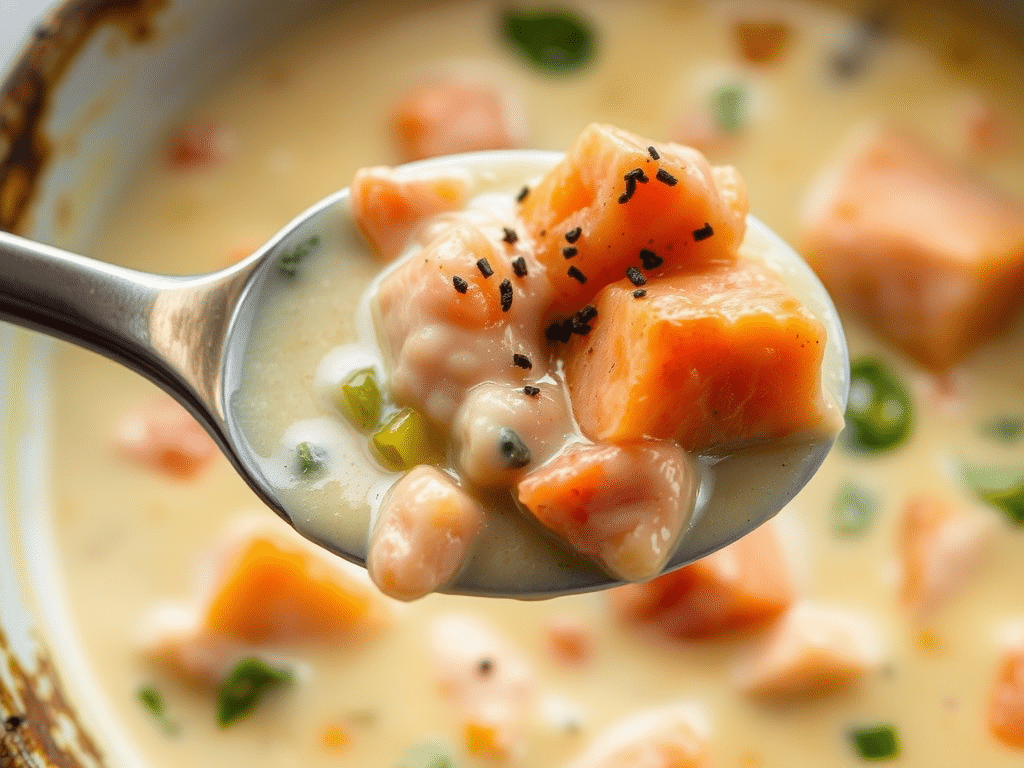
Common Mistakes
A common mistake is overcooking the salmon, which can make it tough. Remember, it will continue to cook in the residual heat. Also, don’t skip the lemon juice; it brightens the flavors and balances the richness of the cream.
Variations
Want to spice things up? Consider adding a pinch of cayenne pepper or smoked paprika for depth. You can also throw in some spinach or kale for added nutrition. If you’d like a heartier chowder, add more potatoes or even some sweet potatoes for a twist.
Cooking Techniques & Science
Understanding why we use certain techniques can elevate your cooking. Sautéing the vegetables first helps release their natural sugars, creating a complex flavor base. Simmering the chowder allows the ingredients to meld together, enhancing the overall taste.
The addition of cream at the end gives the chowder its signature richness. A heavy-bottomed pot is essential here; it distributes heat evenly and prevents scorching.
Serving & Pairing Suggestions
Presentation is key. Serve the chowder in rustic bowls, garnished with fresh dill and a wedge of lemon for brightness. A crusty sourdough bread or a light salad pairs beautifully, providing contrast to the creamy soup.
For drinks, consider a crisp white wine, like Sauvignon Blanc, which complements the flavors without overpowering them. A light beer can also be a great choice, enhancing the overall experience.
Conclusion
Salmon Chowder is more than just a meal; it’s a comforting experience that warms the soul. It’s easy to make and adaptable to your tastes, making it perfect for any occasion. The key takeaway? Don’t rush the cooking process and always taste as you go to ensure a well-balanced dish.
Cooking should be a joy, so don’t hesitate to experiment with flavors and ingredients. Let your creativity shine in the kitchen!
FAQs
1. Can I make this chowder ahead of time?
Yes! It stores well in the fridge for up to 3 days. Just reheat gently on the stove.
2. Is it freezer-friendly?
While you can freeze it, the cream may separate upon thawing. It’s best to add cream fresh when reheating.
3. What can I use instead of salmon?
Feel free to substitute with other firm fish like cod or even shrimp for a different flavor profile.
4. Can I add more vegetables?
Absolutely! Diced zucchini or bell peppers can enhance the dish and add color.
5. How can I make it spicier?
Add a teaspoon of red pepper flakes or diced jalapeños during the sautéing step for a kick.
Dive into this Salmon Chowder and let it warm your kitchen and your heart. Enjoy every delicious spoonful!

Catherine Frank is the creative force behind FoodieGrandie.com, a cozy corner of the internet where she shares her love for home-cooked meals. From hearty dinners to sweet desserts, her recipes bring warmth and flavor to every table. Passionate about simple, delicious food, Catherine turns everyday meals into memorable moments.

